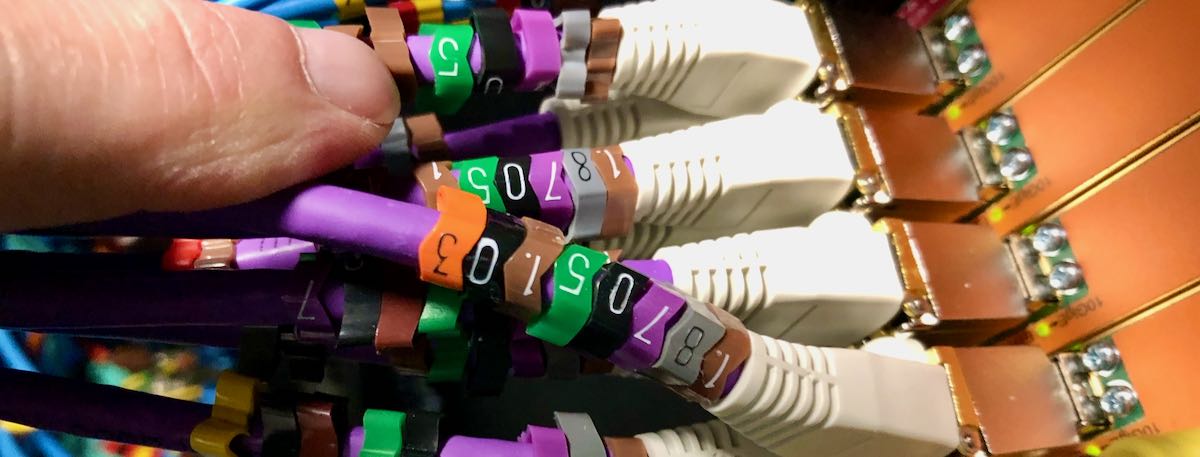We've all seen beautifully loomed and cabled installations in people's brochures and websites, but when it comes to one's own installations somehow it never seems to work out like that - there's always a number of 'washing-lines' that appear to end up being strung across between racks or across the front of switches.
Giving people the right tools
So, why do people do these awful things in data centres or apparatus rooms? My personal opinion is that it's one of two or three reasons
- Firstly lack of time; they'll just make the connection with whatever cable they have at the time and promise to themselves 'Oh, it's OK, I'll sort it out later' - which of course never happens
- Secondly, perhaps availability of the right length cables - please make sure your staff have access to a large selection of decent quality network cables in a selection of lengths, and avoid making them a chargeable item - network cables should be like tea, coffee and sugar; freely available when needed.
- Did the original designers/installers of the network allow for sufficient cableways around the racks? Most 19" rack systems come in two widths 600mm and 800mm; the wider of them allows for extra cabling capacity 'down the sides'.
This will make people's lives so much easier for the life of the data centre at the cost of some slight racking density. Also, don't forget overhead and under-floor cableways as well - we normally send fibres over the top along with power distribution, and Cat6 under the floor
Data Centre support team
Ideally one should have a dedicated data centre support team who provide smart hands and all cabling work within a data-centre rather than just getting whoever happens to be around to do any required patching.
I believe that Sky do this, and their data centres/computer rooms that I've seen have always looked immaculate even after having been in operation for a while!
Employ good wirepersons at least for the initial build
When I first left school, many (many) years ago and went to sign on at the Job Centre, the person who interviewed me said "so what can you do?" and I replied "well I can do basic electronics and I can do a bit of wiring", so they put me down as "Wireman" and that's how I got my first tech job (but that's a story for another blog post!). When we have a wiring requirement we would always bring in a specialist wiring team and we'd strongly recommend you do the same!
Use intermediate patching panels rather than patching direct to switches
If you break out connections into your switches onto separate patch panels you will at least keep the front of your switches clear and clean and make life easier when diagnosing issues; in fact you can intersperse 'source' patching and 'destination' patching on the same patch wall (aka Master Distribution Frame for those with a broadcast frame of mind!) to keep all the cable management in the same place.
Use Software
Finally, please, please, please use some sort of software to keep track of your patching. Have a cable numbering system and use it all the time. Even a spreadsheet is better than nothing. There are open-source patch management packages out there which do the job very well and can also help manage your IP address schema.
Contact Us
If you are looking to build or expand your network, we can help - we liberate your business from network concerns so that you can confidently deliver what you do best.If you want to improve uptime, remove uncertainties, and increase the performance of your systems and networks, then we can help. Call us on 020 3805 7795, or via the website for a free consultation.

